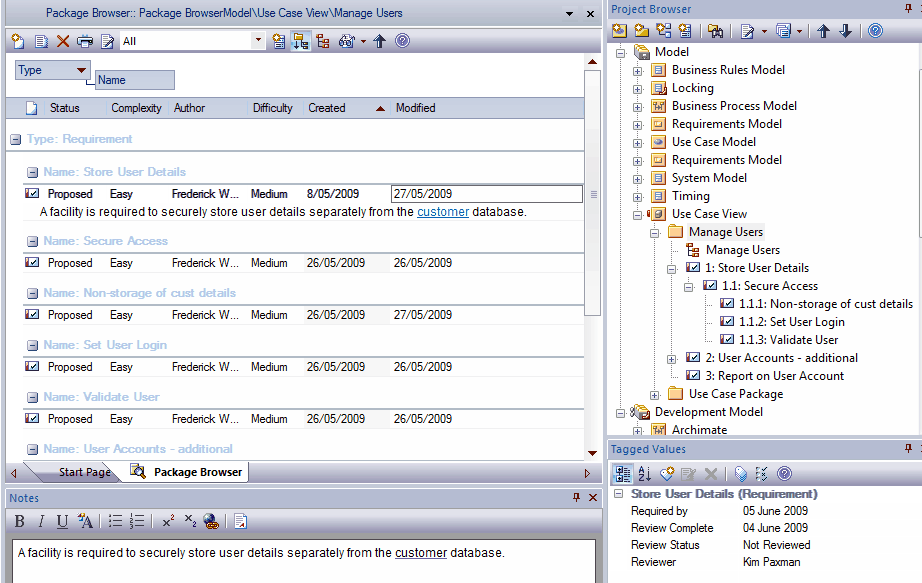| Prev | Next |
Manage Requirements
Requirements Management is the process of maintaining requirements and ensuring they are traced, prioritized, assigned to phases, iterations or sprints in a development life cycle, and also ensuring those changes are communicated effectively to stakeholders. Enterprise Architect has built-in functionality that allows you to assign properties to each requirement for management purposes, such as status, priority, phase, difficulty and detailed notes. This model-based approach to requirements management allows the requirements to be traced to up-process elements such as stakeholders and goals and to down-process elements such as Use Cases and application components. Requirements Managers can work in a variety of ways and Enterprise Architect allows them the flexibility of viewing requirements as visual elements in diagrams or in lists and textual representations. The Specification Manager and list views allow the requirements meta-data to be visualized and edited in a single interface. There is also a powerful chart and graph facility where the requirements metadata such as status and priority can be displayed in compelling charts and graphs. For example, a pie chart could be created showing the percentage of elements with particular statuses.
Example

This display shows the position of the Store User Details Requirement element in the model, and how it relates to other Requirements (Project Browser); the default characteristics of the Requirement (Package Browser) and the extended characteristics (Tagged Values window), and a detailed description of the Requirement (Notes window). You can configure some of these windows to display more information, and/or use other windows and facilities.
Learn more

